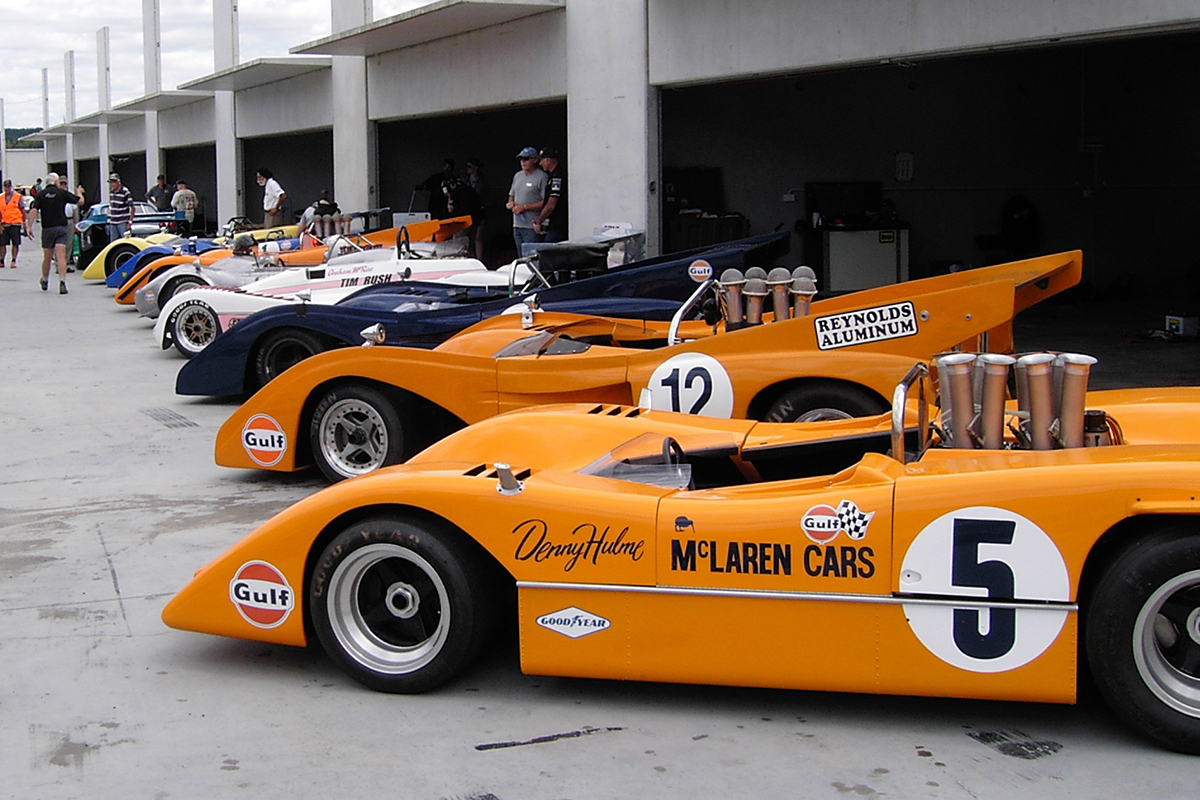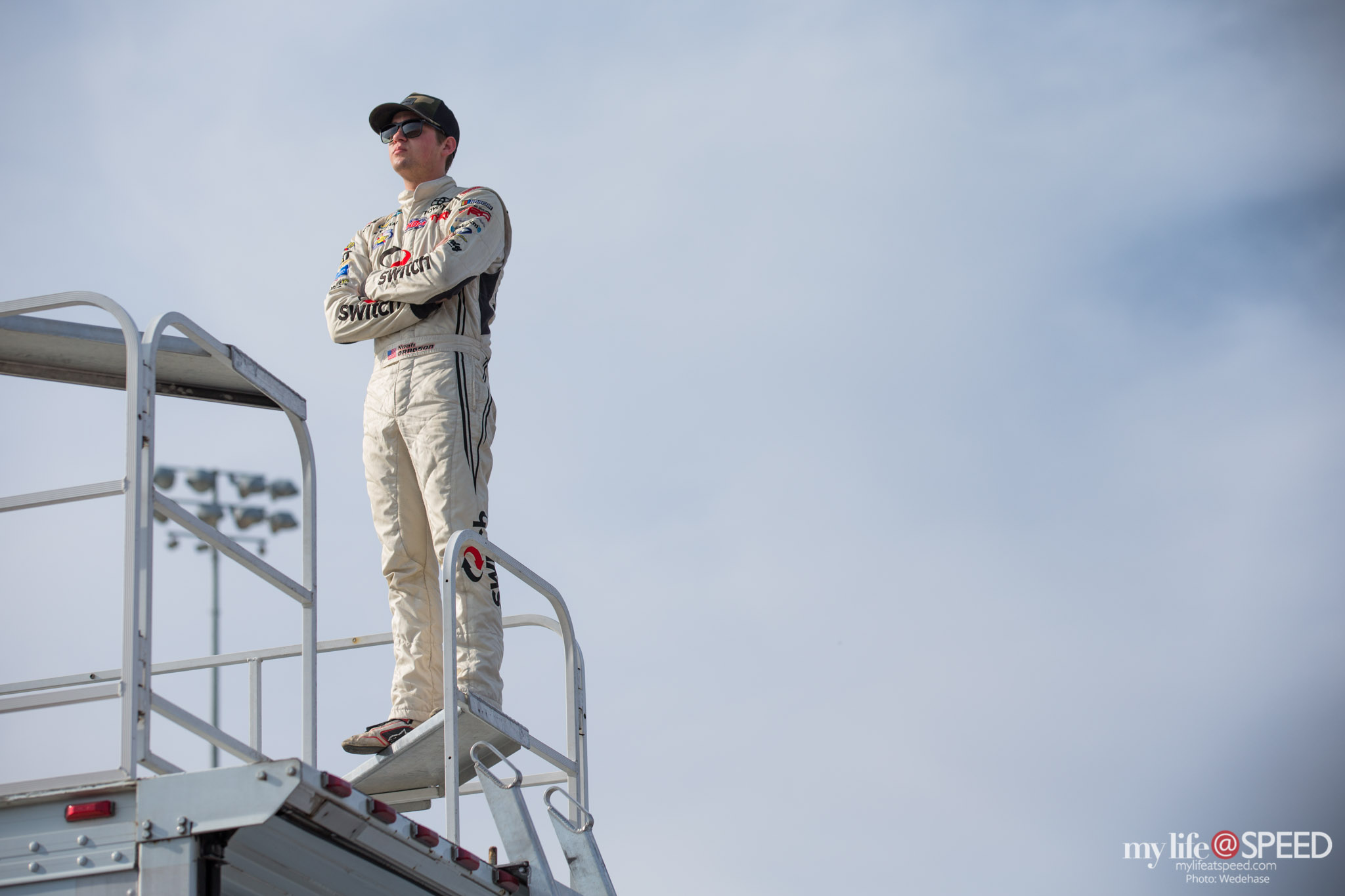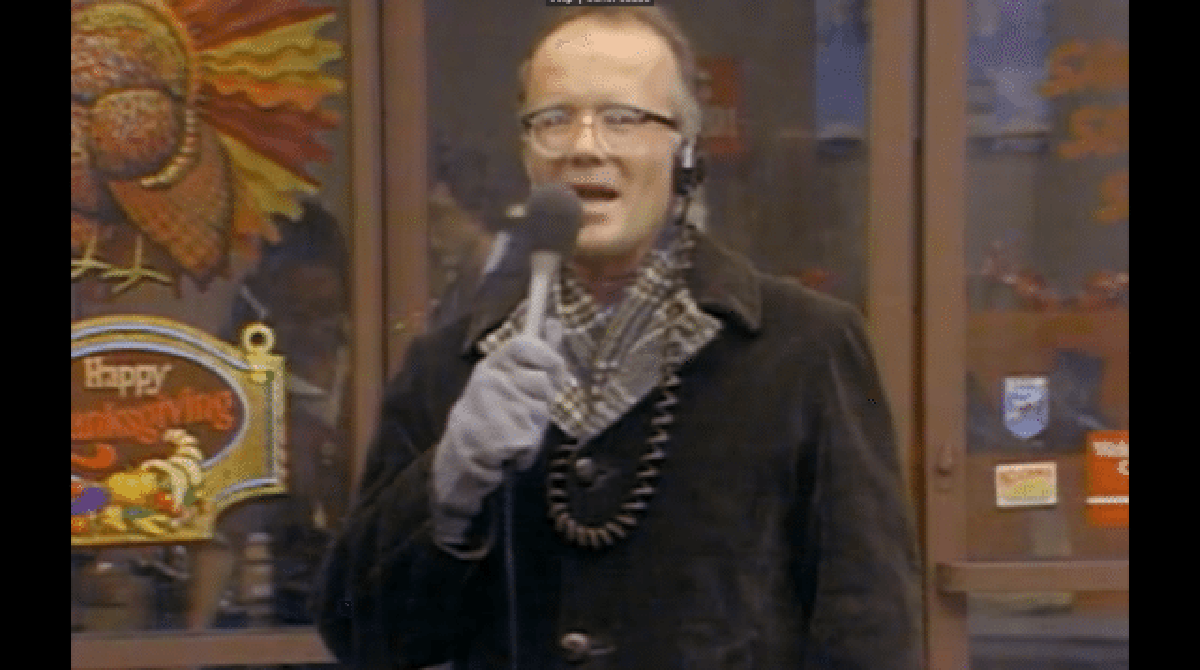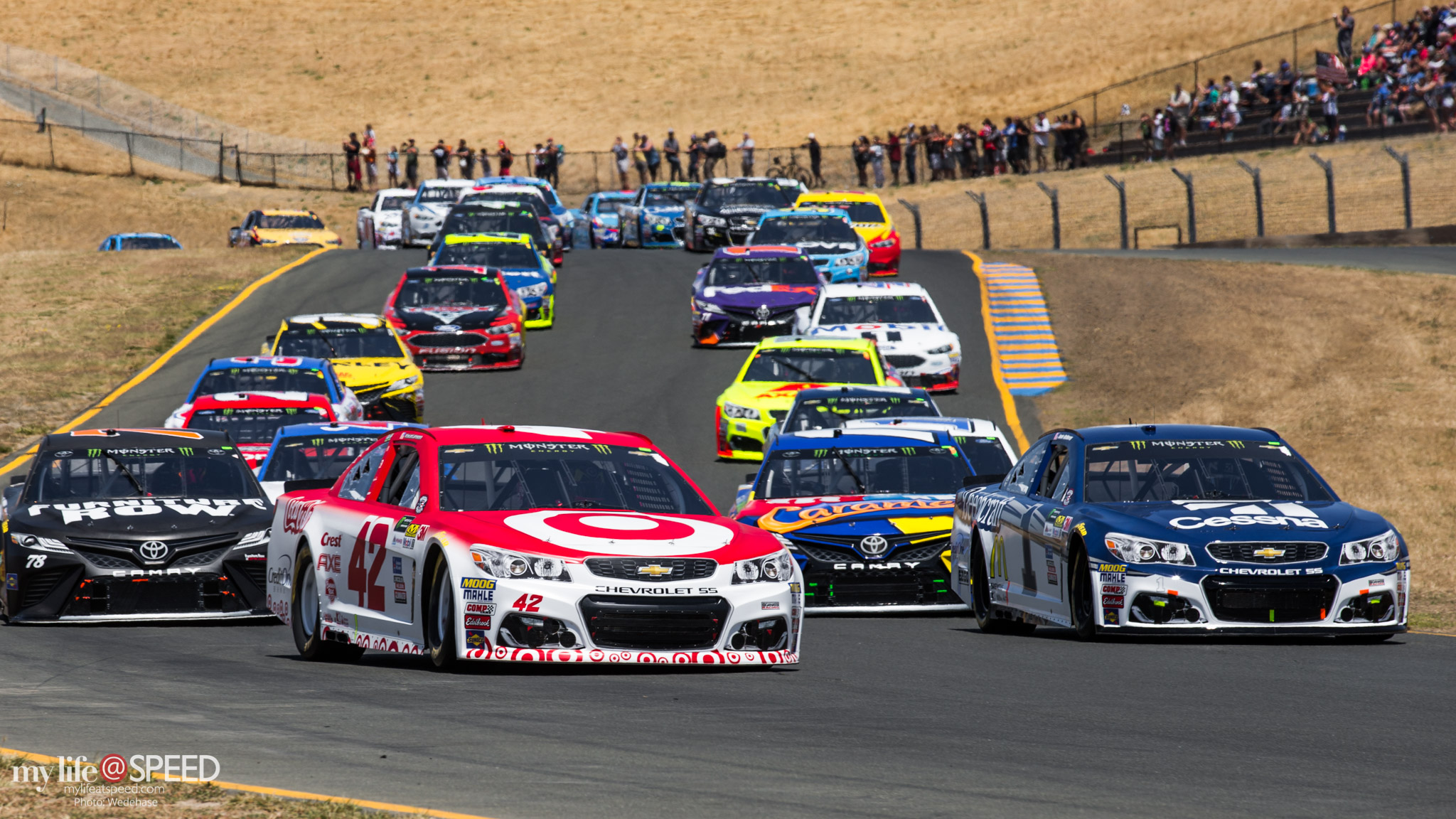YouTube Description: Even by the thrilling standards of 1960s motorsport, Can-Am was viscerally exciting. It was a race series for sports cars with power outputs that dwarfed those in Formula 1™ at the time, the closest motorsport has ever come to truly unrestricted competition – and it was a championship that the young McLaren racing team would come to dominate.
Overview
Can-Am started out as a race series for Group 7 sports racers with two races in Canada (Can) and four races in the United States of America (Am). The Series was governed by rules called out under the FIA Group 7 category with unrestricted engine capacity and few other technical restrictions.
The Group 7 category was essentially a Formula Libre for sports cars; the regulations were minimal and permitted unlimited engine sizes (and allowed turbocharging and supercharging), virtually unrestricted aerodynamics, and were as close as any major international racing series ever got to anything goes. As long as the car had two seats and bodywork enclosing the wheels, and met basic safety standards, it was legal. Group 7 had arisen as a category for non-homologated sports car ‘specials’ in Europe and for a while in the 1960s Group 7 racing was popular in the United Kingdom as well as a class in hillclimb racing in Europe. Group 7 cars were designed more for short-distance sprints than for endurance racing. Some Group 7 cars were also built in Japan by Nissan and Toyota, but these did not compete outside their homeland (though some of the Can-Am competitors went over to race against them occasionally).
SCCA sports car racing was becoming more popular with European constructors and drivers, and the United States Road Racing Championship for large-capacity sports racers eventually gave rise to the Group 7 Can-Am series. There was good prize and appearance money and plenty of trade backing; the series was lucrative for its competitors but resulted, by its end, in truly outrageous cars with well over 1000 horsepower (750 kW) (the Porsche team claimed 1,500 hp (1,100 kW) for its 917/30 in qualifying trim), wings, active downforce generation, very light weight and unheard of speeds. Similar Group 7 cars ran in the European Interserie series, but this was much lower-key than the Can-Am.
On-track, the series was initially dominated by Lola, followed by a period in which it became known as the ‘Bruce and Denny Show’, the works McLaren team dominating until the Porsche 917 was perfected and became almost unbeatable. After Porsche‘s withdrawal, Shadow dominated the last season before Can-Am faded away to be replaced by Formula 5000. Racing was rarely close – one marque was usually dominant – but the noise and spectacle of the cars made the series highly popular.
The energy crisis and the increased cost of competing in Can-Am meant that the series folded after the relatively lackluster 1974 season; the single seater Formula 5000 series became the leading road-racing series in North America and many of the Can-Am drivers and teams continued to race in this. F5000’s reign lasted for only two years, with a second generation of Can-Am following. This was a fundamentally different series based initially on converted Formula 5000 cars with closed-wheel bodies. There was also a 2L class based on Formula Two chassis. The second iteration of Can-Am faded away as IMSA and CART racing became more popular in the early 1980s but remained active until 1987.
Can-Am remains a well-remembered form of racing due to its popularity at the time, the spectacular cars and the lineup of talented drivers. Can-Am cars remain popular in historic racing.
McLaren
McLaren cars were specially designed race cars. The Can-Am cars were developments of the sports cars which were introduced in 1964 for the North American sports car races. The development variants M1A and M1B were raced as factory cars in the 1966 with Bruce McLaren and Chris Amon as drivers. In 1967, specifically for the Can-Am series, the McLaren team introduced a new model, the M6A. The McLaren M6A also introduced what was to become the trademark orange color for the team. The McLaren team was considered very “multi national” for the times and consisted of team owner and leader Bruce McLaren, fellow New Zealander Chris Amon and another “Kiwi”, the 1967 Formula One World Champion, Denny Hulme, Team Manager Teddy Mayer, mechanics Tyler Alexander, Gary Knutson, Lee Muir, George Bolthoff, Frank Zimmerman, Tom Anderson, Alan Anderson, David Dunlap, Leo Beattie, Donny Ray Everett, and Haig Alltounian (all from the USA), Don Beresford, Alec Greaves, Vince Higgins, and Roger Bailey (UK), Tony Attard (Australia), Cary Taylor, Jimmy Stone, Chris Charles, Colin Beanland, Alan McCall and Alistair Caldwell (NZ). The M6 series were a full aluminum monocoque design with no uncommon features but, for the times, there was an uncommon attention to detail in preparation by the team members. The M6 series of cars were powered by smallblock Chevy engines built by Al Bartz Engines in Van Nuys, California. They were the model of reliability. This was followed in 1968 by the M8A, a new design based around the Chevy Mark IV “big block” engine as a stressed member of the chassis. McLaren went “in house” with their engine shop in 1969. The M8B, M8C, M8D and M20C were developments of that aluminum monocoque chassis. McLaren so dominated the 1967-1971 seasons that Can-Am was often called the “Bruce and Denny Show” after the drivers who very often finished 1-2. There was even a 1-2-3 finish at the Michigan International Speedway on September 28, 1969. McLaren 1st, Hulme 2nd, Gurney 3rd. Sadly, 9 months later, Bruce McLaren lost his life on June 2, 1970 at Goodwood when the rear bodywork of his prototype M8D detached during testing resulting in a totally uncontrollable car and a fatal high-speed crash. McLaren continued to succeed in Can-Am after Bruce’s death with a number of other drivers, but the works Porsche effort with turbocharged flat-12 engines and a high development budget meant that they could not keep up with the 917. Although private McLarens continued in the series, the works team withdrew to concentrate on Formula One (and USAC, for several years). Team McLaren went on to become a several time F1 champion and is still very much a part of F1.




